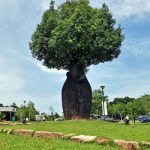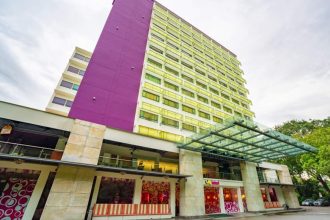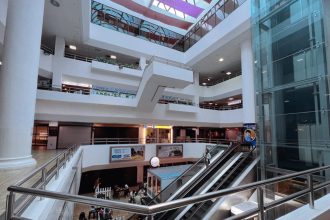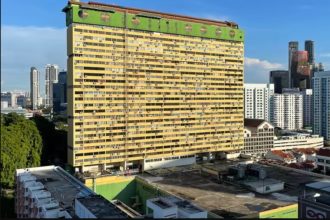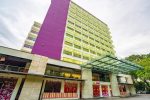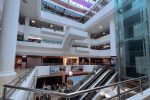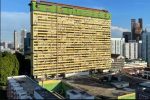Key takeaway
Since its opening in 1980, Bras Basah Complex has grown from a bold urban‑renewal idea into Singapore’s unofficial “Book City.” What began as a cluster of textbooks and stationery shops evolved through decades of community effort into a vibrant hub for books, music, art, and culture, even as its character shifts with changing times. Today, it continues to draw visitors, students, and creatives who appreciate both its historical significance and its modern cultural offerings.
Hidden in Singapore’s civic district, Bras Basah Complex may not look like a literary fortress at first glance. But for decades, it has quietly held its ground. What started as an effort by the government to preserve and modernize book trade in the city center has morphed into a living, breathing community for bibliophiles, artists, musicians, and everyday Singaporeans. Its narrow corridors and colorful signage invite exploration and discovery at every turn.
The Birth of a “City of Books” in the 1980s
In the late 1970s, Singapore’s Housing & Development Board (HDB) envisioned a mixed-use complex that would revive the book-retailing spirit of the old Bras Basah and North Bridge Road shophouses. It aimed to rehouse bookstores displaced by urban renewal into a modern building. The project cost about S$13 million and opened in 1980. The design incorporated a central atrium to encourage interaction among shop owners and visitors, a novel concept at the time.
The building has two residential towers, each 21 storeys, above a podium that has retail and office space on its first five floors. Early policy even required that many of the units be occupied by bookshops, to maintain the area’s historic trade. In addition to its mixed-use functionality, it served as a model for vertical zoning in Singapore, blending residential life with commercial activity seamlessly.
Bras Basah Complex: From Modest Start to Cultural Gathering Place
At first, the complex struggled to fulfill its promise. By late 1980, only a fraction of the allocated bookstore units were occupied by real book retailers. Many had become stationery or cassette shops instead. Business was not booming, but the intimate setting allowed a sense of community to emerge among the early tenants.
Still, the tenants didn’t leave the building’s future to chance. In 1981, bookstore owners formed an association to coordinate and protect their interests. Over time, they held community concerts, xinyao singer performances, drawing contests, and other events to bring people in. These gatherings also allowed for collaboration with nearby schools and art institutions, enriching the cultural landscape.
The complex’s story is part of a wider narrative of Singapore’s urban planning. Nearby, the first shopping atrium in Chinatown also served as an early model for mixed-use hubs, showing how commercial and community spaces could coexist in the city center. Together, they demonstrate how creative urban design can foster social connections and maintain historical trades.
Physical Changes, But the Heart Remains
By 1989, the open atrium at the heart of the complex was fitted with a fiberglass roof, protecting event spaces from sudden rain. This allowed cultural programming to continue year-round. Lighting upgrades and subtle renovations kept the character of the building intact while improving the experience for visitors and tenants alike.
In 2004–2005, led by the Bras Basah Complex Merchants’ Association, another wave of renewal came. The building was retiled, repainted, and re-lit. The effort aimed to sharpen the identity of the complex as a centre for books and arts. New signage and clearer wayfinding also made it easier for first-time visitors to navigate the labyrinthine corridors.
The Bras Basah Complex in Its Modern Identity
Today, Bras Basah Complex is more than just bookstores. The mix of tenants has shifted. While some original bookshops have closed, others still thrive. Many new tenants are studios, galleries, music schools, and printing workshops. Small cafés and niche retail spaces complement the artistic vibe, creating a holistic experience for visitors.
Its location continues to attract students and creatives. Institutions nearby, including LASALLE College of the Arts and NAFA, contribute to a steady stream of visitors. The building also benefits from its proximity to the largest hawker centre, which helps maintain the vibrancy of the civic district. Seasonal events, such as art exhibitions or book fairs, keep the complex active and connected with the wider cultural scene.
A Snapshot: Facts About Bras Basah Complex
| Building | Key facts | Nearest MRT | Sources |
|---|---|---|---|
| Bras Basah Complex | Two 21‑storey residential towers above a 5‑storey podium, completed in 1980 | City Hall, Bugis (among others) | Source |
The Rise, Decline, and Reinvention of the Book Trade Here
At its height, Bras Basah Complex had dozens of bookshops, including educational publishers, exam-paper vendors, and stationery suppliers. Over time, the rise of online sales and higher rents made it harder for some traditional stores to stay open. Yet, the community of bookstore owners has continually adapted, finding creative ways to sustain business and retain cultural relevance.
To keep the area lively, the complex also connects to broader urban networks. The nearby green corridor across Singapore offers walking paths and open spaces, adding to the cultural and recreational appeal. Visitors often combine a visit to Bras Basah with a walk along the corridor, creating a seamless urban experience that merges heritage, literature, and nature.
Still Thriving: Arts, Music, and Communities
Although the number of bookshops has declined, Bras Basah Complex retains its character and charm. Art galleries, music studios, craft shops, and printing services create a lively ecosystem that draws a diverse crowd — from students and educators to collectors and casual visitors. Local groups continue to organise xinyao reunions, workshops, and book fairs, keeping traditional Singaporean music and literary culture alive. Street-level activity, like pop-up exhibitions, live performances, and collaborative projects with nearby schools and arts institutions, further invigorates the space, making it a hub for creativity and social interaction. Seasonal events, such as art festivals and student showcases, attract even more attention, while small cafes and communal spaces allow visitors to linger, discuss ideas, and form lasting connections. In this way, Bras Basah Complex continues to nurture both emerging and established talents, ensuring that the building remains a vibrant heart of Singapore’s creative scene.
Looking Ahead: The Next Chapter for Singapore’s Book City
As Bras Basah Complex continues into the 21st century, it holds on to what made it special: a community hub for students, creatives, and residents. Visitors continue to value Bras Basah Complex for its connection to Singapore heritage sites, reflecting decades of culture, memory, and ongoing transformation. Plans for further events, workshops, and partnerships with educational institutions ensure that the complex remains relevant and inviting.
Bras Basah Complex: The Living History of This Book-City
Bras Basah Complex proves that commercial buildings can evolve into spaces that foster people, art, and ideas. Its story is one of resilience, adaptation, and community, a cultural landmark quietly shaping Singapore’s literary and artistic life for over four decades. Visitors still come to hunt for rare books, attend music lessons, or simply soak in the creative atmosphere that has become synonymous with the complex. This continuous cycle of learning, sharing, and creativity ensures that Bras Basah remains more than just a building; it is a living testament to Singapore’s cultural heartbeat. Regular art walks, collaborative exhibits, and themed events reinforce its role as a community anchor while encouraging discovery and dialogue among generations of visitors.


